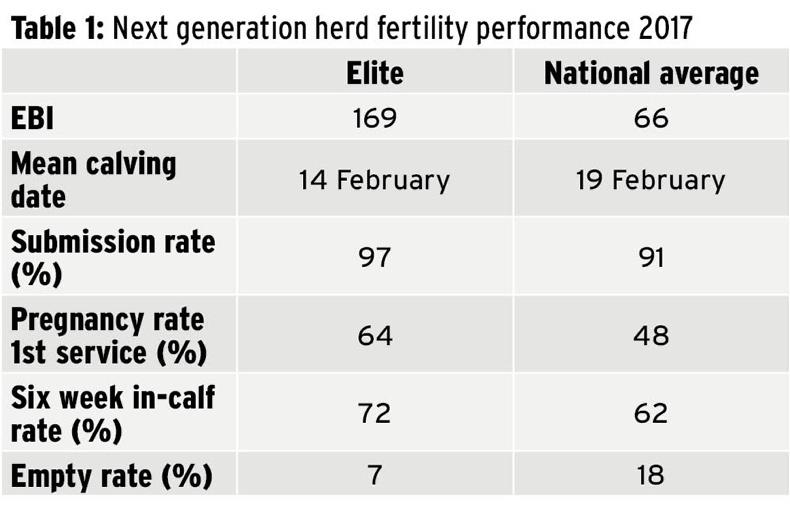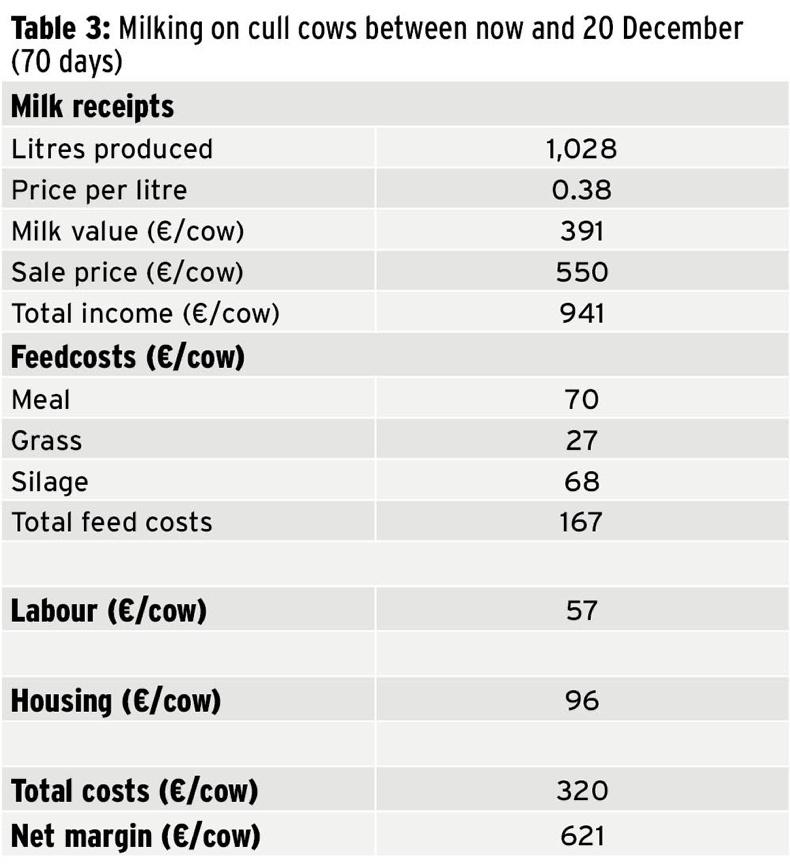This is the peak period for pregnancy scanning with scanners everywhere flat out doing whole herd scans. Like every year, the results are a mixed bag, with empty rates ranging anywhere from as low as 1% or 2% empty to as high as 25% or 30% empty. Of course these are outliers, the majority of results range between 5% and 15% empty.
This is the peak period for pregnancy scanning with scanners everywhere flat out doing whole herd scans.
Like every year, the results are a mixed bag, with empty rates ranging anywhere from as low as 1% or 2% empty to as high as 25% or 30% empty. Of course these are outliers, the majority of results range between 5% and 15% empty.
As a measure of breeding success however, the overall empty rate is a crude enough measure, but it is the one that most farmers report on.
The length of the breeding season will have a big bearing on the empty rate, with longer breeding seasons giving cows more opportunities to go in-calf.
But a prolonged breeding season leads to a prolonged calving season which is much less profitable than a compact calving season.
The other thing is the empty rate should be reflective of all cows bred.
From speaking to farmers there appears to be a range in fertility performance among heifers
You sometimes hear farmers say that they didn’t want to keep such and such a cow anyway, so they exclude her from the empty rate. While the cow may well have been culled even if she was in-calf, if she was eligible for breeding then she should be included in the figures.
Some farmers will mark the cows for culling at the start of the breeding season and not include them in the empty rate calculation at all, which is better.
The six week in-calf rate is a much better measure of breeding performance than just empty rate.
This is the percentage of the milking herd that went in calf in the first six weeks, or the first two rounds of breeding. It’s different from the six week calving rate in that it doesn’t include heifers.
It’s a better measure because it shows the true fertility performance of the herd because the results can’t be manipulated.
This is because calving rate can be skewed if there are a large number of heifers coming in.
To work out six week in-calf rate, divide the number of cows that held to a service in the first six weeks of breeding by the total number of cows eligible for breeding.
The target is 75% six week in-calf rate.
Results
Results from the breeding season on all the main Teagasc research farms is presented in Table 1.
Some of the farms are running experiments with different groups of cows but for the purposes of this exercise we took the performance from the overall farm.

Milk production figures for all the research farms are based on daily milk recording and weekly milk sampling for fat and protein composition based on the control herd. Milk production from Shinagh and Greenfield is based on actual milk deliveries plus any milk fed to calves.
The average empty rate on the Teagasc farms is 10.65% after 12.5 weeks of breeding.
These results are reasonably good, considering the target is 10% after 12 weeks of breeding. Looking at six week in-calf rate, the average across the farms is 79% with the highest results in Clonakilty at 86% and the lowest results in Johnstown Castle at 63%.
Once again, Clonakilty Agricultural College is the star performer with only 4% empty.
For the last number of years, the farm manager Fergal Coughlan has been selling later-calving cows because he has so many early-calving cows at his disposal. This shows the cumulative effect of good fertility performance – compact calving and loads of surplus animals.
Johnstown Castle in Wexford is suffering a bit from the opposite problem.
Empty rate on the spring calving cows this year is 21% after 13 weeks. Farm manager Aidan Lawless says that last year the empty rate was much lower but that a high proportion of the herd were calving in April and that many of the empty cows now are the ones that calved in April.

Despite this, Aidan says that with the inclusion of heifers the six week calving rate next year will be 80%.
Average performance across all the farms is good. As the Teagasc farms are benchmark farms in their respective regions, management should be satisfied with the results. It’s worth pointing out that the average EBI of the Teagasc herds is €122, which is €50 more than the national average at €72.
All the herds are primarily Jersey crossbred, with the exception of the Next Generation Herd and Johnstown Castle.

Next generation herd
The breeding performance of the two strains of Holstein Friesian cows in the Next Generation Herd at the Kilworth farm in Moorepark follow previous year’s results. There is nearly €100 in the difference in EBI between the two strains.
The Elites have an EBI of €169 and had a 97% submission rate, 64% conception rate to first service, a 72% six week in-calf rate and only 7% empty.
The National Average herd has an EBI of €66. They had a submission rate of 91%, a 48% conception rate to first service, a 62% six week in-calf rate and an 18% empty rate. In terms of milk solids produced to date, the Elites have produced 397kg while the National Average have produced 376kg from 230kg of meal fed on a per-cow basis.
Heifers
From speaking to farmers there appears to be a range in fertility performance among heifers, with some very disappointing results on some farms. Normally, you would expect very low empty rates in heifers, usually around 2% or 3%, but results between 8 and 10% empty after 10 weeks or so seems to be common this year. On the Greenfield farm, 7% of the heifers were empty.
Some farmers are finding that it is the biggest heifers that are the ones not going in calf. There is a correlation between being over target weight at mating and lower subsequent fertility performances but this usually doesn’t become evident until the first lactation.
What to do with empty cows
With a high milk price many farmers are wondering if they should sell or keep and milk on empty cows. Typical output and costs are outlined in Table 3. The presumption is that empty cows are either sold now, or out of the parlour in 70 days’ time on 20 December.

In terms of yield, it is presumed they will milk 16l/day in October, 14l/day in November and 12l/day up to their sale date in December. This is a total of 1,028l and at an average milk price of 38c/l will be worth €391/cow.
Over this period it is presumed they will consume 4kg/day of meal costing €250/t. Half of the diet will be grass costing 6c/kgDM and half of the diet will be silage, costing 15c/kgDM. Total feed costs over the 70 days is €167/cow.
Labour costs are based on an average of 20 hours worked per cow per year. On a pro-rata basis this works out at a labour charge of €57/cow over the 70 days with labour costing €15/hour. Housing costs are calculated at €1,000 per cow space borrowed over 15 years at 5% interest so costing €96/cow/year between interest and capital.
Some will argue that you shouldn’t include the cost of grass, labour or housing as these are on the farm anyway, but there is an opportunity cost with all of these so they should be factored in.
If the cow is worth €550 out of the parlour in December then the net margin will be €621 by keeping the cow and milking her on.
Young, empty cows in milk are currently making between €700 and €800 with older cows making a bit less.

Based on the figures in Table 3, farmers would be better off selling the empty cows now if they can get €700 or €800 for them.
But maybe this is an optimistic price.
Prices in the mart are between €1/kg and €1.20/kg for plain cull cows. The figures quoted in the table are heavily influenced by the price of cows now and in December, how much milk she produces and the milk price.
The figures in table 3 are based on feed being readily available.
Where grass is scarce or too wet to graze then the feed costs will be higher and more supplement will be required across the whole herd as a result of keeping the extra cows.
For farmers that keep and fatten empty cows themselves a different set of figures is required.
Once the empty cow is dried off she is then a beef animal that is a separate enterprise. Doing the figures shows that either way, there is not a lot of true profit in milking stale cows off meal and silage in the winter.
Average empty rate on Teagasc research farms was 10.6% after 12.5 weeks of breeding.Clonakilty had the lowest empty rate at 4%.Some farms are experiencing high empty rates in heifers.Keeping and milking on empty cows depends on milk and cow prices. Read more
High empty rates after scanning
Knowing the safety risks around breeding





SHARING OPTIONS: